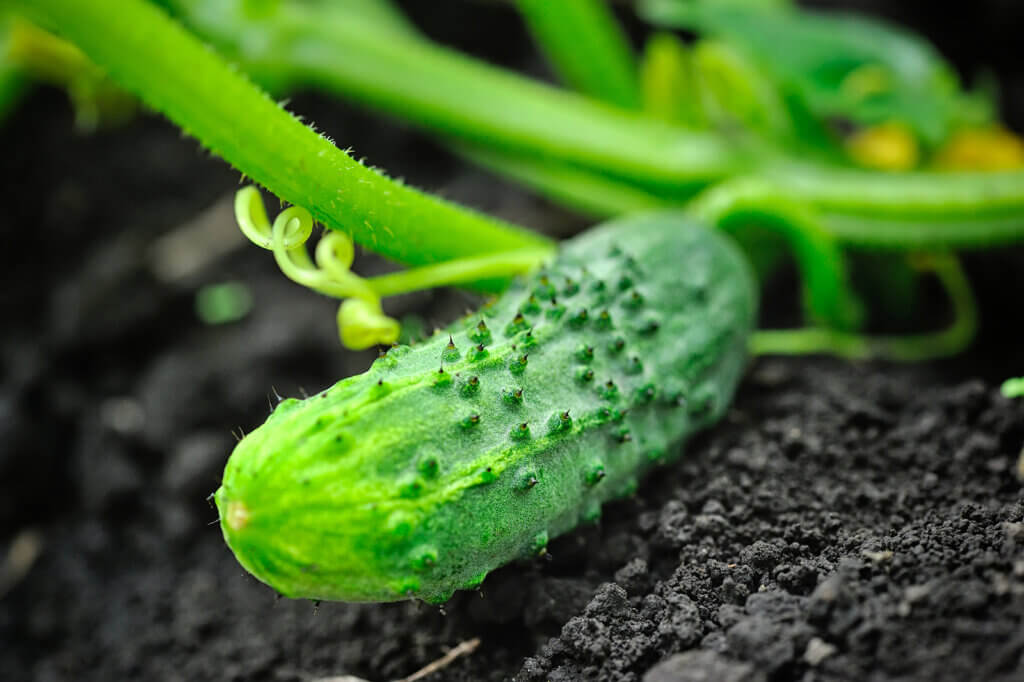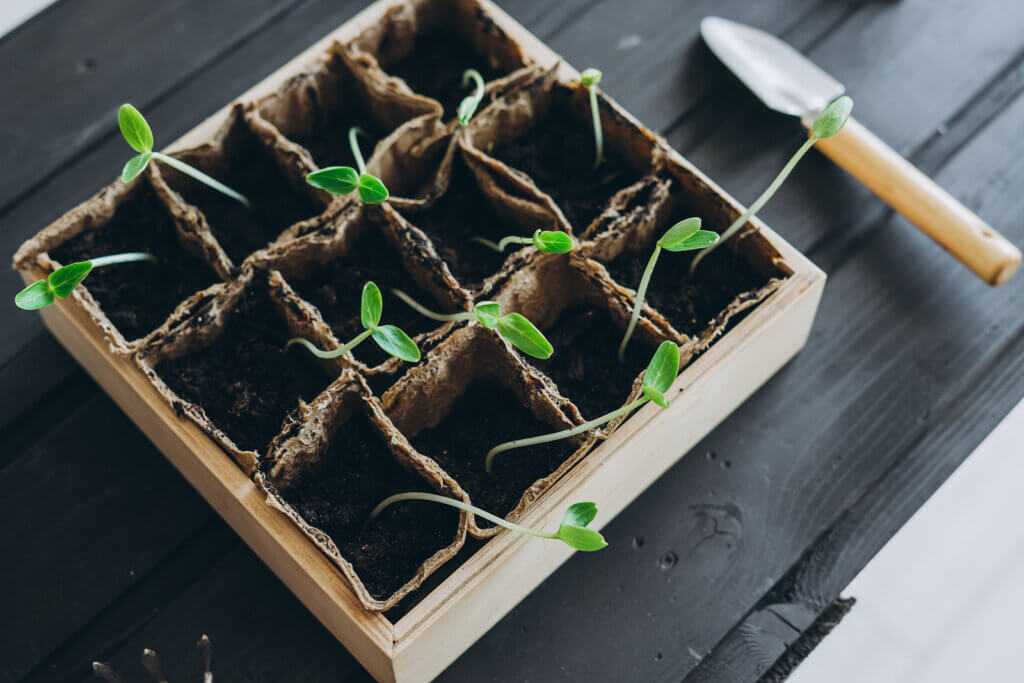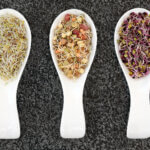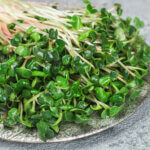Table of Contents
I've been absolutely fascinated by the growing popularity of cucumber microgreens lately, and let me tell you, it's for all the right reasons. These little greens have captured my heart not just because they look stunning, but also because they pack a punch when it comes to essential nutrients.
In this comprehensive guide, I want to share my journey of discovery with you as we dive deep into the world of cucumber microgreens. We'll uncover the incredible nutritional benefits they offer, and explore the intricate process of nurturing them from seed to plate, and I'll be dishing out all the tips and tricks I've learned along the way to help you grow these green treasures successfully.
What Are Cucumber Microgreens?
Cucumber microgreens are a type of young, edible greens that belong to the cucumber plant species (Cucumis sativus). These tiny plants are typically harvested just a few days after the wisconsin smr cucumber seeds pickling have sprouted and are in the early stages of growth.
They are characterized by their vibrant green color, refreshing cucumber taste, and a satisfyingly crisp texture that adds a delightful crunch to various dishes.
These miniature greens may appear diminutive, but their nutritional content packs a punch. Cucumber microgreens are known for their rich assortment of vitamins, minerals, and phytonutrients.
They are a particularly good source of vitamins A, C, and K, as well as essential minerals like potassium and calcium. Additionally, they contain antioxidants, such as beta-carotene and flavonoids, which can help protect cells from oxidative damage and promote overall health.
Due to their appealing taste and nutritional value, cucumber microgreens have gained popularity in the culinary world. They are often used as a garnish, added to salads, sandwiches, and wraps, or incorporated into smoothies and cold soups. Their versatility and refreshing flavor make them a valuable addition to a variety of dishes, not to mention their potential health benefits.

Nutritional Benefits of Cucumber Microgreens
Let's delve deeper into the impressive nutritional benefits that cucumber microgreens offer:
Vitamin Powerhouse
Cucumber microgreens are rich in various vitamins, with a notable abundance of vitamin K and vitamin C. Vitamin K plays a pivotal role in blood clotting and bone health, while vitamin C is a potent antioxidant that bolsters the immune system and contributes to skin health.
A Wealth of Minerals
These microgreens are a superb source of essential minerals such as potassium and magnesium. Potassium helps regulate blood pressure and supports proper muscle and nerve function, while magnesium is integral for overall well-being.
Low-Calorie Marvels
For individuals mindful of calorie intake, cucumber microgreens are a welcome addition to their diet. They offer flavor and nutrition without a significant caloric load, making them an ideal choice for weight-conscious eaters.
Antioxidant Arsenal
The antioxidant content in cucumber microgreens is commendable. They contain compounds like beta-carotene and flavonoids, which assist in safeguarding cells from damage caused by free radicals. Consuming these microgreens contributes to your overall health and well-being.
Fiber for Digestive Health
Dietary fiber is crucial for maintaining digestive health. Cucumber microgreens provide a modest amount of dietary fiber, promoting regular bowel movements and a healthy gut.
Natural Hydration
Cucumber microgreens possess a high water content, which can be particularly beneficial in keeping you hydrated, especially during hot weather. Their hydrating properties add to their appeal as a nutritious addition to your diet.
How to Grow Cucumber Microgreens
Growing cucumber microgreens at home can be a rewarding and sustainable way to enjoy their fresh flavor and nutritional benefits. Here's a detailed guide on how to cultivate these miniature marvels:
Gather Your Supplies
Before you start growing cucumber microgreens, it's essential to gather all the necessary supplies:
- Cucumber microgreen seeds: Purchase high-quality cucumber microgreen seeds from a reputable source.
- Shallow tray or container with drainage holes: Ensure the container has good drainage to prevent waterlogged soil.
- Potting mix or coconut coir: Use a suitable growing medium that provides good aeration and moisture retention.
- Spray bottle for watering: This will help you maintain the right level of moisture without disturbing the seeds.
- Light source: Cucumber microgreens require adequate light for healthy growth. You can use natural sunlight or grow lights.
Planting the Seeds
The process of growing cucumber microgreens begins with preparing the growing medium and sowing the seeds:
- Fill your chosen container: Fill the shallow tray or container with potting mix or coconut coir, leaving about an inch of space at the top.
- Sow the seeds: Sprinkle the cucumber microgreen seeds evenly over the surface of the soil.
- Press the seeds: Gently press the seeds into the soil to ensure good seed-to-soil contact, which promotes successful germination.
Watering for Success
Proper watering is crucial during the germination and growth stages:
- Moisten the soil: Use a spray bottle to mist the seeds and soil thoroughly. Make sure the soil is evenly moist but not waterlogged.
- Cover the tray: Create a mini greenhouse effect by covering the tray with a clear plastic lid or plastic wrap. This helps retain moisture and create a suitable environment for germination.
- Provide light: Place the tray in a location with indirect sunlight or under grow lights to initiate the germination process.
Nurturing Germination
Patience is essential as you wait for the cucumber microgreens to germinate:
- Germination time: Cucumber microgreens typically begin to germinate within 3-7 days.
- Maintain moisture: Keep the soil consistently moist but not soggy. Use the spray bottle to water as needed to avoid drying out or overwatering.
Growth and Harvesting
As your cucumber microgreens thrive, it's time to prepare for a bountiful harvest:
- Remove the cover: Once the seeds have successfully germinated, remove the plastic cover to ensure proper air circulation.
- Harvesting time: Cucumber microgreens are ready for harvesting when they reach a height of 2-3 inches, which usually occurs within 10-14 days.
- Harvesting method: Use clean scissors or shears to snip the to grow borage microgreens just above the soil line. This ensures you get the best flavor and texture for your dishes.

Tips for Growing Robust Cucumber Microgreens
Cultivating robust cucumber microgreens can be a rewarding endeavor, and to achieve the best results, it's important to follow these comprehensive microgreen tips:
Temperature Management
Cucumber microgreens thrive in a specific temperature range of 70-75°F (21-24°C). Maintaining these conditions is critical for their growth and development. Using a thermometer to monitor the temperature can be beneficial, especially in indoor setups where environmental control is essential.
Lighting Essentials
Adequate lighting is paramount for cucumber microgreens. When growing them indoors, it's recommended to provide 12-16 hours of light each day using specialized grow lights. These lights mimic natural sunlight and help the microgreens develop strong and healthy leaves. Adjust the distance between the lights and the microgreens to ensure they receive the right amount of light without getting scorched.
Ventilation Strategy
To prevent the growth of mold and mildew, proper air circulation is crucial. After the cucumber microgreens have germinated, remove any plastic coverings or domes from their growing containers. This promotes airflow and maintains a healthy environment. Using a small fan set on low can further enhance ventilation.
Watering Wisdom
Overwatering can be a common pitfall when cultivating microgreens. To avoid this, use a spray bottle to mist the microgreens gently. This technique keeps the soil consistently moist without saturating it. Be attentive to the moisture level, as excess water can lead to mold and fungal problems. A well-draining growing medium can also aid in proper moisture management.
Harvesting Timing
For the ultimate flavor and texture, it's important to harvest cucumber microgreens at the right stage. Typically, this is when the first true leaves appear, and the microgreens are young and tender. Harvesting at this point ensures the best culinary experience, with microgreens that are flavorful and have a pleasing crunch. Use clean, sharp scissors or shears to cut them just above the soil level.
Culinary Delights with Cucumber Microgreens
Having successfully cultivated a flourishing batch of cucumber microgreens, it's time to delve into their myriad culinary applications. These versatile greens can elevate the taste and presentation of your dishes in numerous ways. Here's a comprehensive look at how to make the most of cucumber microgreens in your culinary creations:
Enhance Your Salads
Take your salads to a whole new level by incorporating cucumber microgreens. These miniature greens bring a refreshing crunch and a delicate cucumber flavor to your salad bowl. Their vibrant green color also adds an appealing visual element, making your salads not only tastier but also more visually appealing.
Revamp Sandwiches and Wraps
wap out traditional lettuce or spinach with cucumber microgreens in your sandwiches and wraps. You'll discover a delightful contrast in texture and enjoy a subtle burst of cucumber flavor. Whether you're crafting a classic club sandwich or a veggie wrap, these microgreens can transform the ordinary into the extraordinary.
Artistic Garnishes
Elevate the presentation of your dishes with cucumber microgreens as garnishes. Sprinkle them atop soups, omelets, or grilled entrees to infuse a burst of color and freshness. The vibrant hues and crisp texture of these microgreens make them an ideal choice for adding that finishing touch to your culinary creations.
Smoothie Sensations
Boost the nutritional value of your morning smoothies by incorporating cucumber microgreens. Thanks to their mild flavor, they won't overpower the taste of your favorite smoothie recipes. However, their nutrient-rich profile adds a healthy boost to your daily dose of vitamins and minerals. Simply blend them into your smoothie for an extra dose of freshness and nutrition.
Creative Appetizers
Get creative with appetizers by using cucumber microgreens as a key ingredient. Create cucumber microgreen and cream cheese roll-ups or top crostinis with a cucumber microgreen and smoked salmon combination. The possibilities are endless, and these sunflower microgreen tray family can add a touch of elegance to your appetizer menu.
Savory Stir-Fries
Experiment with savory stir-fries by tossing in cucumber microgreens towards the end of cooking. Their mild cucumber flavor will complement the stir-fry's other ingredients while providing a satisfying crunch. This unexpected addition can breathe new life into your stir-fry recipes.
Cucumber Microgreen Pesto
Get inventive in the kitchen by crafting a unique cucumber microgreen pesto. Blend cucumber microgreens with garlic, nuts, Parmesan cheese, and olive oil to create a vibrant and flavorful pesto sauce. Use it as a pasta sauce, a sandwich spread, or a dip for fresh vegetables.
Versatility in Culinary Exploration
Cucumber microgreens are incredibly versatile and can be used in a wide range of culinary creations. Their mild cucumber flavor makes them an ideal addition to various dishes, both savory and sweet. Here are some innovative ways to incorporate cucumber microgreens into your meals:
- Sushi Rolls: Instead of traditional cucumber slices, use cucumber microgreens in your homemade sushi rolls for a unique twist on this classic dish.
- Cold Soups: Garnish chilled soups like gazpacho with a handful of cucumber microgreens to add a refreshing crunch and flavor.
- Cocktail Garnish: Elevate your cocktails by using cucumber microgreens as a garnish. They not only look appealing but also infuse a subtle cucumber essence into your beverages.
- Salad Wraps: Create healthy and gluten-free wraps by using large cucumber microgreen leaves as a substitute for tortillas or lettuce.
- Fruit Smoothies: Combine cucumber microgreens with fruits like watermelon and mint for a hydrating and refreshing smoothie that's perfect for hot summer days.
Sustainable and Cost-Effective
Growing cucumber microgreens at home is not only rewarding in terms of flavor and nutrition but also environmentally friendly and cost-effective. By cultivating your own microgreens, you reduce your reliance on commercially grown produce that often involves long-distance transportation and excess packaging.
Furthermore, the cost savings can be significant over time. A small packet of cucumber microgreen seeds can yield multiple harvests, making it a sustainable and economical choice for fresh greens.
Homegrown microgreens also allow you to control the cultivation process, ensuring that no harmful pesticides or chemicals are used in their production. This aligns with the growing trend towards organic and sustainable food practices, providing you with peace of mind about the quality of the food you consume.
Frequently Asked Questions (FAQs)
1. What are Cucumber Microgreens?
Cucumber microgreens are the young seedlings of cucumber plants, harvested shortly after germination. They are renowned for their vibrant green color, mild cucumber flavor, and delightful crispness.
2. What Nutritional Benefits do they Offer?
Cucumber microgreens are a nutritional powerhouse. They boast an array of vitamins, including vitamin K and vitamin C, essential minerals like potassium and magnesium, and a wealth of antioxidants. These greens are low in calories, high in fiber, and their water content contributes to hydration.
3. How can I Cultivate Cucumber Microgreens at Home?
To grow cucumber microgreens at home, gather cucumber microgreen seeds, a shallow tray with drainage holes, potting mix or coconut coir, a spray bottle for watering, and a light source (either natural sunlight or grow lights). Refer to our comprehensive guide for detailed steps on planting, watering, and maintaining optimal growing conditions.
4. What is the Ideal Temperature for Cultivating Cucumber Microgreens?
Cucumber microgreens thrive in temperatures ranging from 70-75°F (21-24°C). Maintaining this temperature range is crucial for their optimal growth and development.
5. Can I Cultivate Cucumber Microgreens Indoors?
Absolutely! Indoor cultivation is a viable option. Provide your microgreens with 12-16 hours of light daily using grow lights to simulate natural sunlight.
6. How Long Does it Take for Cucumber Microgreens to Germinate and be Ready for Harvest?
Cucumber microgreens typically begin to germinate within 3-7 days. Harvest them when they reach a height of 2-3 inches, usually within 10-14 days.
7. How Can I Use Cucumber Microgreens in Cooking?
Cucumber microgreens offer culinary versatility. Add them to salads for flavor and crunch, substitute them for traditional lettuce or spinach in sandwiches and wraps, use them as a garnish for soups or omelets, or blend them into smoothies for added nutrition.
8. What is the Best Way to Harvest Cucumber Microgreens?
Harvest cucumber microgreens when they are young and tender, usually just after the first true leaves appear. Use clean scissors or shears to cut them just above the soil line for the best flavor and texture.
9. How Can I Prevent Mold or Fungal Issues during Growth?
Proper ventilation is crucial to prevent mold and mildew. After germination, remove any plastic covers to ensure good air circulation. Additionally, avoid overwatering, as excess moisture can contribute to these issues.
10. Are Cucumber Microgreens Suitable for Weight-Conscious Diets?
Absolutely! Cucumber microgreens are an excellent choice for weight-conscious individuals. They are low in calories but bursting with flavor and nutrition, making them a guilt-free addition to various dishes without significantly impacting your calorie intake.
Conclusion
In my personal journey, cucumber microgreens have become a culinary treasure that I can't imagine living without. Their vibrant green hue, crisp texture, and refreshing cucumber flavor have truly captured my heart. Beyond their visual appeal, these tiny greens have revealed themselves as nutritional powerhouses, enriching my meals with essential vitamins, minerals, and antioxidants.
As I've ventured into growing cucumber microgreens at home, I've not only enjoyed the rewards of a bountiful harvest but also relished the process of nurturing these delicate plants. Each step, from planting the seeds to providing the ideal conditions for growth, has become a source of satisfaction and connection to the natural world.
Incorporating cucumber mustard cress microgreen tray regular into my dishes has elevated my culinary creations, adding a burst of freshness and creativity to every meal. This journey has been a delightful exploration of nutrition, sustainability, and the joy of culinary experimentation, and I encourage others to embark on their own adventure with these remarkable greens.
Sources
https://www.ncbi.nlm.nih.gov/pmc/articles/PMC9864543/
https://www.ncbi.nlm.nih.gov/pmc/articles/PMC8877763/
https://www.sciencedirect.com/science/article/pii/S2772566921000057




Comments
Loading…